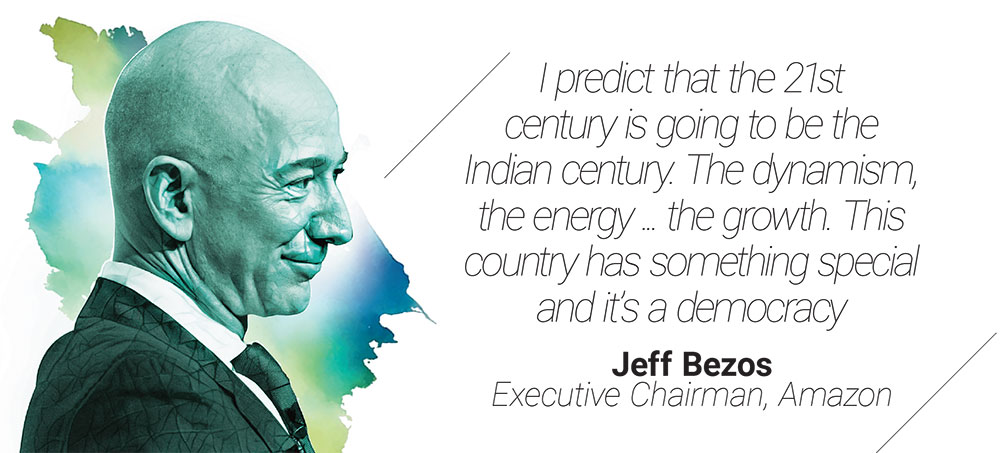India’s IT and business process management (BPM) industry started from a position whose potential or possibilities very few people could recognise. If I had a dollar for every naysayer when I started the BPM venture 30+ years ago, I would have been a very rich man. Back then, we used to run telephony on copper lines, and potential customers would say, “We cannot talk to you for three minutes without the call dropping and you are telling me that you will man our vendor payables! You are dreaming.”
But, we learned and experimented, leveraged the technology as it existed at that point of time and were able to showcase the capability of the Indian workforce on a global platform. We demonstrated that if given similar training, the Indian workforce was as good, if not better, than their international counterparts at a price point that was substantially lower. We created an industry that now has revenues over $200 billion and more than five million direct jobs.
A large part of its five million employees are migrants from smaller towns and cities where they were born, brought up and educated. That is their home where they pay no rent and eat from the family kitchen. When the IT/BPM industry took off, they migrated to larger cities to participate in these opportunities where they could leverage their capability and education, which was duly upgraded and polished by their employers through extensive training. They created residences in these cities.
In the cities, they began with staying in rented apartments on a shared basis and then moved on to staying into independent rented/own apartments. Purchases and rentals itself created a huge real estate boom. This was a significant contributor to the development in Pune, Gurugram, Thane, Mumbai, Bengaluru, etc. Over time, “residence” in the city became “home”, as they got promoted, prospered, got married and started a family. Schools, colleges, hospitals, shopping malls, cinemas, etc. came into being to cater to their needs and to earn profits from fulfilling their needs. More than 20 million indirect jobs were created thus.
The process of “residence” becoming “home” was linked to promotions, salary increases, marriage and kids as part of starting a family. I argue that a large part of the doer workforce, especially in the BPM industry, when starting out its career in the first three to five years is single and lives in residences in large cities which it does not consider home. Home for this workforce is still where the parents are—in smaller towns and cities.
The work-from-home option that became a reality during the pandemic was actually a mix of work-from-residences and work-from-home. The vast majority of the “doer” population went from their residences in cities to their homes in smaller towns and cities and did genuine work-from-home, rather than working from residences. Lo and behold, things worked out reasonably well, as India leveraged its vast fibre-based internet backbone.
Therein lies the opportunity of creating the next million jobs in smaller towns and cities. That work -from-home, and not just residences, is doable has been proven. A different aspirational level was created for the youth hailing from smaller towns and cities once they went back home, since they did not have to live in the city where the company is located, pay rent and spend money on other amenities. Their earning was a king’s ransom in those small towns, which added to their savings and well-being of their families.
There is enough anecdotal evidence to show that for every person who went to cities for work, there is another one—if not two or three!!—who did not because of family pressure and issues of security, particularly in case of young women who are not allowed to migrate easily. Those who did not migrate are as capable as the ones who did. They missed reaping the economic dividend of the new world, and the IT/BPM industry missed a potential well-performing employee, possibly with lower attrition as they live at home.

Today, we have fibre optics right down to our smallest towns and villages, and we are rolling out 5G, which will build capability that is unprecedented. An opportunity is staring at us in the face, and the next million jobs may well come from these towns. Undoubtedly, there are challenges that have to be thought through and solutions found. Training, culture, confidentiality, work ethic and work segregation, all need to be considered. It is no different than the challenges that we faced when we started doing international work from India and the BPM sector was born. Upfront, the answers were not evident and we had to experiment to find solutions, which we did.
To implement this, a new model has to evolve across the board for each element. Shifting to a work-from-home model will have multiple complications. For instance, the education and training model needs to be more in tune with industry needs. This may include training the teachers in advanced programming languages. Here, government incentives and policies will need to play a role in facilitating the creation of such training and skill up-gradation. This co-creation will, of course, benefit the company, but it can play a significant role in giving a boost to employment and the business ecosystem in smaller towns.
In a small town, a company might not have to pay an employee a salary that it does in Bengaluru, Mumbai or Delhi. But it also does not have to pay a salary that is standard in that small town. A new midpoint can be found and a legal structure should be created. Which state taxes to pay and what regulation? Is gig worker or contract worker a possibility? Is it tax deducted at source on salary or GST for such payments? Is electricity in homes commercial rates or residential rates? Several such questions need to be considered.
The possibilities need to be chalked out. Then comes a dialogue among the government, the industry and potentially some customers, because for the new model to evolve, new policies will be needed. The government has to use fiscal and non-fiscal measures to nudge people in the direction of leveraging technology—fibre optic and 5G—and true work-from-home option to take IT to the next level.
With the pandemic and subsequent digitalisation, nobody can do without the IT/BMP industry in India. We need to have a 10-to-20 year view in terms of resource availability and ways to leverage it and finding the potential employee and what they want. While we have created millions of jobs directly and indirectly, there is significant headroom for growth.
For the industry, the model of tomorrow is akin to an Indian thali, which has seven to eight items on it. The present model focuses on churning out the entire thali with all its components from one kitchen and serving them together. In the world of tomorrow, there can be centres of excellence in small towns focussing on specific activities or outcomes and, therefore, specific skills. This can make training easier, more streamlined and of higher quality. In this model, different items of the thali can come from different towns: dal from Panipat, sambar from Coimbatore, papad from Surat and so on. The company will still be able to use technology to pull it all together to form that thali and offer it to the customer. Work from home is the next level of that capability. There needs to be fiscal and non-fiscal incentives to make this happen. Policy and regulation will play a big role. Gig workers will become a reality.
The present experimentation of the hybrid model of working four days in office and two days from home (which practically is residence and often not home) will force the staff to move back to the city where the office is located. To look into the future and where we can potentially reach, we need to change ourselves and understand new technologies and capabilities.
The time has come for the company to leverage technology and go where the employee is, rather than asking the employee to go where the company is.
Raman Roy, Chairman and Managing Director Quatrro











